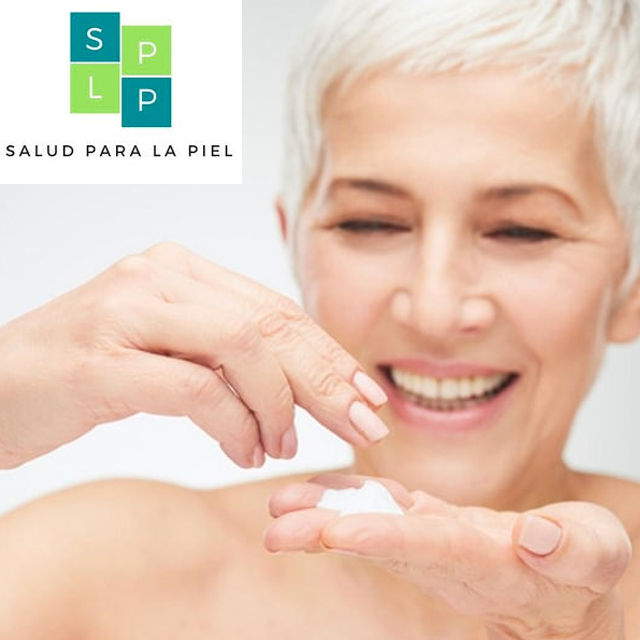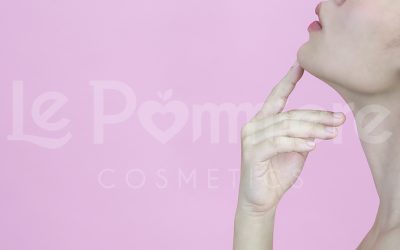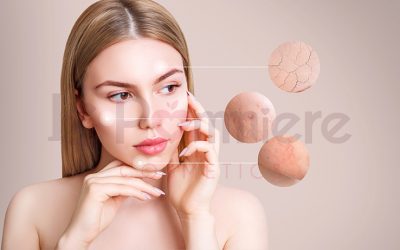Beneficios de usar Le Pommiere en tu rutina diaria
Tu aliado en cosmética profesional
Cruelty-free 💖🐰
Porque amamos a los animales tanto como tú, nuestros productos son 100% cruelty-free.
Libre de parabenos 🚫💄
Decir no a los parabenos es decir sí a una piel más sana. Nuestra línea está diseñada para entregarte lo mejor sin comprometer tu salud o seguridad.
50 años de experiencia 🎉📚
Llevamos 50 años en la industria de la cosmética profesional, y esa experiencia se traduce en cada producto que desarrollamos.
Componentes de origen natural 🌱✨
La naturaleza es nuestra mayor inspiración. Por eso, elegimos ingredientes de origen natural que nutren y rejuvenecen tu piel.
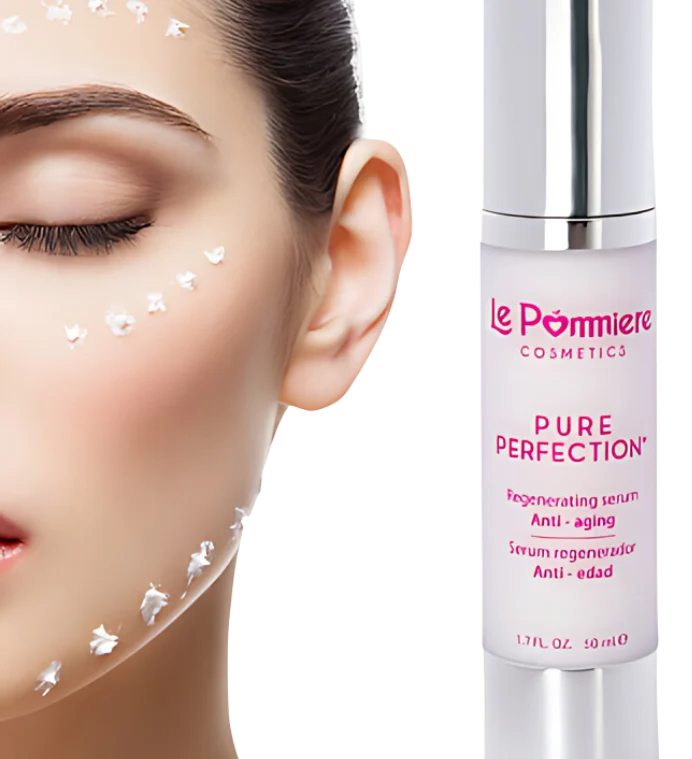
Nuestros productos top ventas
Descubre nuestros cosméticos faciales más deseados

Tratamiento crema anti acne y espinillas Renewed Skin XL
45,97 €
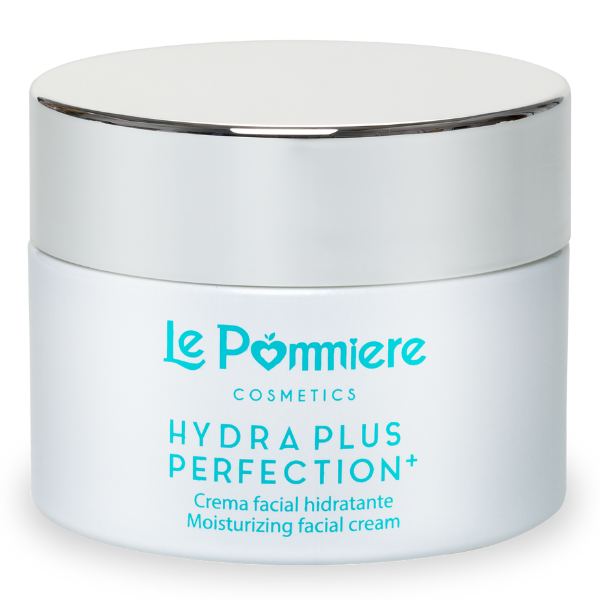
Crema facial nutritiva, 50ml anti arrugas Hydra Plus Perfection
33,97 €
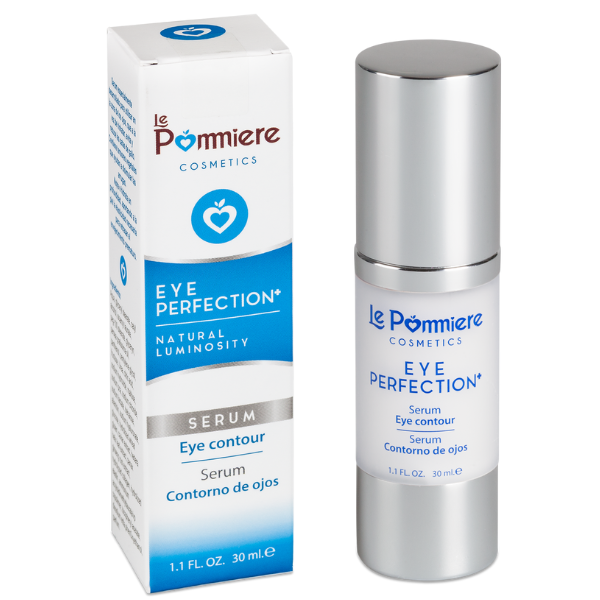
Serum contorno de ojos anti arrugas Eye Perfection
25,97 €

Crema ojo bolsas y ojeras, anti arrugas Eye Perfection Ultra
27,97 €

Adiós complejos: Descubre el mejor tratamiento anti acné
¿Luchas con el brillo indeseado y los brotes inesperados? 😥✨ En Le Pommiere Cosmetics, entendemos los desafíos únicos que enfrenta la piel grasa y acneica. Por eso, hemos dedicado nuestros conocimientos a desarrollar soluciones específicas que aborden estas preocupaciones, permitiéndote disfrutar de una piel visiblemente más limpia, equilibrada y radiante.
- Cremas para pieles grasas y acneicas: 🌿💧 Enriquecidas con ingredientes de alta calidad, estas cremas ayudan a regular la producción de sebo, minimizar el aspecto de los poros y reducir el brillo, promoviendo un acabado mate y saludable.
- Geles para el acné: 🌱🔬 Con fórmulas que combinan el poder de ingredientes naturales con los últimos avances en cuidado de la piel, estos geles trabajan para calmar la inflamación, combatir las bacterias causantes del acné y acelerar el proceso de curación.

Adiós complejos: Descubre el mejor tratamiento anti acné
¿Luchas con el brillo indeseado y los brotes inesperados? 😥✨ En Le Pommiere Cosmetics, entendemos los desafíos únicos que enfrenta la piel grasa y acneica. Por eso, hemos dedicado nuestros conocimientos a desarrollar soluciones específicas que aborden estas preocupaciones, permitiéndote disfrutar de una piel visiblemente más limpia, equilibrada y radiante.
- Cremas para pieles grasas y acneicas: 🌿💧 Enriquecidas con ingredientes de alta calidad, estas cremas ayudan a regular la producción de sebo, minimizar el aspecto de los poros y reducir el brillo, promoviendo un acabado mate y saludable.
- Geles para el acné: 🌱🔬 Con fórmulas que combinan el poder de ingredientes naturales con los últimos avances en cuidado de la piel, estos geles trabajan para calmar la inflamación, combatir las bacterias causantes del acné y acelerar el proceso de curación.
Los favoritos de nuestras clientas
Los mejores productos para el cuidado de la piel

Activos de origen natural
-
Centella asiática
-
Aloe vera
-
Manteca de karité
-
Ginseng
-
Almendra
-
Vitaminas A, C, E
-
Castaña
-
Aguacate
-
Ácido salicílico
-
Árbol del té
-
Caléndula
-
Coco


Voces de confianza: Testimonios de nuestros clientes 🌟
Let customers speak for us
from 987 reviews¡Estamos en Instagram!
Síguenos y entérate de súper descuentos y sorteos
“Para liberarse, la mujer debe sentirse libre, no para rivalizar con los hombres, sino libres en sus capacidades y personalidad”.
Indira Gandhi
#lepommierecosmetics.espana #lepommiere.romania #diadelamujer #mujermadre #belleza #valentiayfuerza
Es muy importante que no descuides tu cuidado personal. Incluyendo tu ruina diaria de:
Limpieza facial ❤️😊😊💋
El uso de un buen hidratante
Una crema para el contorno de ojos y
Un buen protector solar😍🦋❤️
#lepommiere #lepommiereespana#lepommierecosmetics #cuidadodelapiel #beauty #healthyskin #testproduit #beautifulskin #creams #beautyroutine #cosmetics #facialcleansing #skincare #cosmetcs #cosmeticshop
enamora con tu actitud
y atrae miradas
Los tiempos cambian y nuestros cuerpos también. Renewed Skin te ayuda a llevar mejor estos cambios en tu vida.
#lepommiere #acnetratamiento #antiacnecream #acne #antiacnetreatment #acnesolution #antiacne #crueltyfree #lepommiereacne #acnetreatment #solucionparaelacne #acneskincare #antiacnegel #antiacneserum #creamantiacne #serumantiacne #facialcleansing #healthyskin #redness #acnecommunity #beautifulskin #enrojecimientofacial #facialflushing #testproduit #beauty #cosmetics #creams #enrojecimiento #radiantskin #skincare
Disfruta de los múltiples beneficios de este gran producto. Tu familia merece lo mejor de la naturaleza
#lepommiere #aloevera #aloeveraskincare #gelaloevera #naturalremedy #mosquitobite #crueltyfree #lepommierealoevera #sunburn #testproduit #aloeveragel #facialcleansing #mosquitobites #beautifulskin #insectbites #insolation #cosmetcs #cosmetics #radiantskin #aftersun #beauty #beautyroutine #healthyskin #skincare
Solo tu decides como cuidar tu rostro. Empieza ahora
#lepommiere #acidhialuronic #antiage #lepommiereantiwrinkle #vitamincserum #antiwrinkle #crueltyfree #acidhyaluronic #almondoil #beauty #cosmetcs #ginkgobiloba #testproduit #aloeveragel #antiaging #beautifulskin #cosmetics #creams #ginseng #hydration #skincare #beautyroutine #luminousskin #moisturizer #wrinkles #aloevera #facialcleansing #healing #moisturizing #aloeveraskincare
Las emociones y el verdadero impacto psicológico del acné.
El acné es un problema que la mayoría enfrentaremos en algún momento de nuestras vidas. Por ello es importante, saber elegir el producto adecuado para tu tipo de piel de acuerdo a las distintas necesidades que tenga.
#lepommiere #acneskincare #acnetratamiento #crueltyfree #serumantiacne #acnee #acnesolution #antiacnecream #creamantiacne #antiacne #antiacnetreatment #lepommiereacne #acnetreatment #antiacneserum #solucionparaelacne #antiacnegel #creams #beautifulkincleansfacial #beautifulkincleansfacial #beautifulkincleanskicial #beautifulkinskincial #heartsfacial #acneecommunity #beautyrutine #facialflushing
Devuelvele el encanto a tus ojos.
Nuestros ojos son extremadamente expresivos, revelan nuestro interior, nuestras experiencias, sentimientos y estados de ánimo.
Por eso es importante cuidar como se ven nuestros ojos.
¡Porque nuestros ojos lo merecen, démosles el cuidado adecuado!
#lepommiere #bagseyes #eyebags #ojoshinchados #bolsasojos #cremadeojos #eyecare #ojoshidratados #eyecontour #eyecream #swolleneyes #eyecreams #hydratedeyes #crueltyfree #lepommierebolsasyojeras #ojeras #testproduit #arrugasojos #beauty #cosmetcs #cosmetics #hidratante #skincare #radiantskin #regeneralapiel #antienvejecimiento #antiwrinkle #beautifulskin #beautyroutine #creams
El lugar en el que te salen los granos revela más de lo que crees sobre tus hábitos de belleza y tu estilo de vida. Cada zona del rostro puede sufrir brotes por diferentes motivos, ya sea por la dieta, por los productos para el cabello o por los tratamientos de belleza que utilizas. Por ello es importante que aprendas a conocer tu piel.
#lepommiere #acneskincare #acnetratamiento #crueltyfree #serumantiacne #acne #acnesolution #antiacnecream #creamantiacne #antiacne #antiacnetreatment #lepommiereacne #acnetreatment #antiacneserum #solucionparaelacne #antiacnegel #creams #beautifulskin #enrojecimiento #testproduit #cosmetcs #facialcleansing #healthyskin #beauty #cosmetics #enrojecimientofacial #skincare #acnecommunity #beautyroutine #facialflushing
Rutina para la piel grasa:
Una buena rutina de limpieza, hidratación y tonificación facial hará que tu piel luzca tersa, suave y, ¡sin brillos!. Limpieza facial especial para las pieles grasas o seborreicas.
#lepommiere #hidratacion #mantecadekarite #testproduit #crueltyfree #lepommierepielgrasa #oilyskincare #oilyskin #oilyskincream #oilyskinmask #oilyskinproblems #oilyskintreatment #acidohialuronico #facialcleansing #oilyskinmoisturizer #pielgrasa #acidhialuronic #acnetreatment #beautifulskin #beauty #creams #hidratante #hydration #oilyskins #sheabutter #acidhyaluronic #celulas muertas #deadcells #glycerine #glycerinesoap
La juventud es pasajera, y con el paso de los años va perdiendo elasticidad. No dejes que las arrugas se apoderen de tu rostro.
#lepommiere #acidhialuronic #crueltyfree #antiaging #antiwrinkle #facialcleansing #testproduit #vitaminc #antiage #lepommiereantiage #acidhyaluronic #beautyroutine #cosmetcs #cosmetics #dryskin #luminousskin #moisturizer #radiantskin #skincare #colagen #healthyskin #hydration #vitamincserum #beautifulskin #ginseng #moisturizing #regenerateskin #wrinkles #collagen #beauty
Enfrentemos el estrés con una actitud positiva. Logrando así salud física y emocional.
#lepommiere #lepommiereespana #cuidadodelapiel #lepommierecosmetics #beautifulskin #testproduit #beautyroutine #facialcleansing #radiantskin #beauty #cosmetics #cosmeticshop #creams #skincare #cosmetcs #healthyskin
Las células de la piel se regeneran, se estima que ellas se renuevan cada 28 días.
Puedes ayudar a mejorar este proceso, manteniendo hábitos saludables y exfoliando regularmente la piel de tu rostro
Exfoliar la piel te ayudará a retirar la acumulación de células muertas.
#lepommiere #acidohialuronico #facemask #limpiezafacial #mascarrillafacial #oilyskinmask #facialcleansing #oilyskinmoisturizer #pielgrasa #crueltyfree #lepommieremascarilla #oilyskin #puntosnegros #regeneralapiel #testproduit #oilyskincream #astringente #celulas muertas #cosmetcs #creams #exfoliating #facialclay #hidratante #oilyskintips #oilyskintreatment #radiantskin #regenerateskin #tonify #arcillafacial #beautyroutine
Olvídate de las irritaciones
Olvídate de las irritaciones.
Nuestra piel es muy sensible a cualquier contacto,
el afeitado y depilado podrían irritar la piel
#lepommiere #aloeveraskincare #mosquitobites #gelaloevera #lepommierealoevera #naturalremedy #crueltyfree #mosquitobite #aloeveragel #sunburn #testproduit #aloevera #facialcleansing #healthyskin #insectbites #beauty #beautyroutine #skincare #aftersun #beautifulskin #cosmetics #cosmetcs #insolation #radiantskin
Hablan de nosotros
Revistas, páginas web, blogs… de todo el mundo
NOEMELIA
Revista de Moda y Belleza
CHARLENE
Revista de moda, mujer y actualidad
UNISIMA
Revista de belleza, salud y moda
B de Belleza
De Susana Corral
Harper's Bazaar
Revista de moda, mujer y actualidad
Salud para tu Piel
Sitio web de referencia para el cuidado de la piel
El Blog de Le Pommiere
Tips y recomendaciones para el cuidado de la piel
Tres remedios caseros para las arrugas de la cara y el cuello
Mascarillas para las arrugas: Antes de conocer las mascarillas naturales contra las arrugas, es primordial tener en...
4 causas del acné hormonal y consejos prácticos para controlarlo
El acné hormonal aparece en muchas personas independientemente de su edad. Es un tipo de acné caracterizado por la...
Ocho maravillosos beneficios del uso del aloe vera en el cuerpo
Hemos comentado algunas enfermedades que pueden aliviar su dolencia con el aloe vera. Si nos centramos en algunos...
Contacta con Le Pommiere
Estamos aquí para ayudarte en todo lo que necesites





























